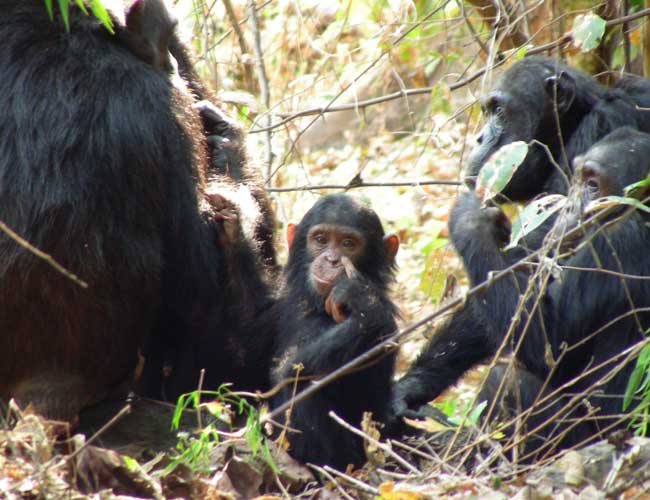Researcher Walks Among Dying Baby Chimps

This Behind the Scenes article was provided to LiveScience in partnership with the National Science Foundation.
As the sun rises, my commute to work begins. There is no traffic at all to speak of except for a few baboons frolicking about and a couple warthogs at their favorite grazing spot for breakfast.
I am at 6 degrees south of the equator and 30 degrees east of the prime meridian, where there is an enchanted forest, called Mahale Mountains. It is situated along the shores of a vast lake, Lake Tanganyika in East Africa. Mahale Mountains National Park is a foot-walking Park. It stretches across 623 square miles in a remote location in western Tanzania, East Africa. Mahale is very remote. The nearest town is between 10 – 12 hours by steamship.
I come here to study the wild chimpanzees. They are habituated to human presence.
Lucky to find them
Each morning I wake up and wonder where the chimpanzees are today — high up in the mountain range or lower and closer to my base camp. Trekking through the forest, I listen for their vocalizations. On a good day, I hear some vocalizing and can work towards finding them. A great day is one where I actually find them and can spend some time with them as they roam around in perfect liberty.
I am humbled; their appearance and behavior command my respect. After all, chimpanzees are the closest living relative of humans. Less than about 2 percent of their DNA sequence differ ours. This close genetic relationship makes chimpanzees susceptible to many of the same diseases that we are susceptible to.
Get the world’s most fascinating discoveries delivered straight to your inbox.
I study chimpanzee health. I want to determine how and why they are getting sick and dying.
Eco-friendly research
I have developed a software program for this research. It enables me to collect data rapidly using a handheld computer. I can download the data automatically directly into a database that I built. I need a reliable power source in the field though to run the system.
Mahale is very remote and there is no source of power available. A gasoline-powered generator or solar power is the only options available.
I decided to go all solar since I believe it is the most environmentally friendly approach. I needed a physical structure to work out of. I wanted my research station to be eco-friendly and leave the smallest possible footprint in the forest. So I worked with architects and engineers to design and develop my eco-friendly lab.
Human disease
For my research, I observe the chimpanzees. Also, I collect specimens for analysis. Research on chimpanzees here is "hands-off." I can only collect feces and urine, and saliva can sometimes be collected from leftover pieces of fruits that the chimpanzees were eating.
Using samples collected from sick chimpanzees, I can do forensics of sorts. Following this approach, I was able to detect a virus in the feces. After doing further molecular analysis on this virus, I was able to tell that this virus was closely related to a human virus called the metapneumovirus. Metapneumovirus in humans causes acute respiratory disease. It can sometimes lead to death, most often in young children. Looking at my data, it was very clear that most of the chimpanzees that were getting sick and dying were the younger ones, as is the case with humans.
Now, the question arises, how the virus came to infect and cause disease in chimpanzees at Mahale. At this moment in time, it is very hard to answer this question. Currently, I am doing further research. Hopefully, I will be able to determine the origin of this human-related chimpanzee metapneumovirus which has been causing disease and death in chimpanzees at Mahale. The work goes on…
- Video - Walk With the Mahale Chimpanzees
- Curtain Call For Hollywood's Orangutans
- Court Claim: Chimps Are People, Too
Editor's Note: This research was supported by the National Science Foundation (NSF), the federal agency charged with funding basic research and education across all fields of science and engineering. See the Behind the Scenes Archive. More about the project is available at the Bush to Base Bioinformatics website.


